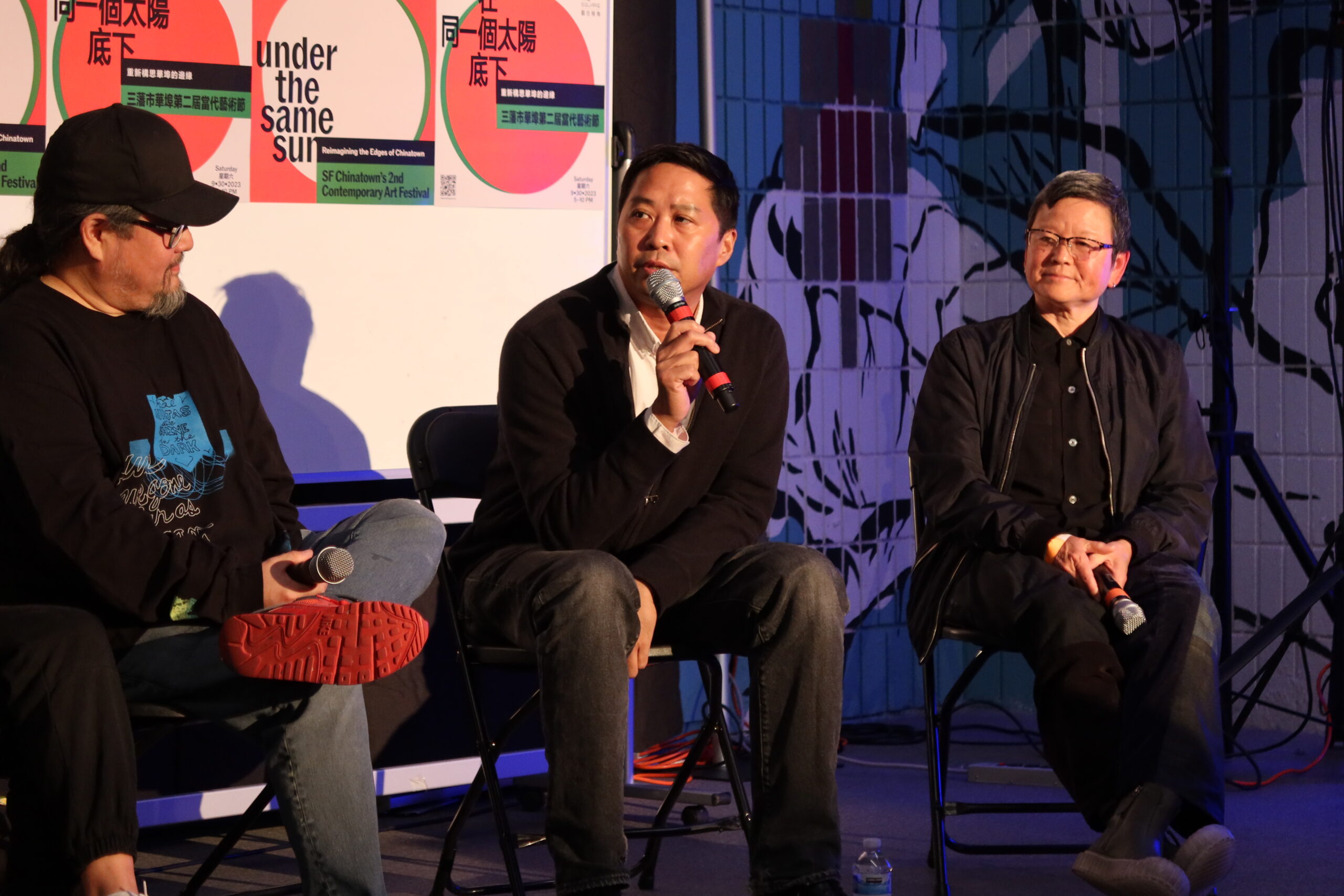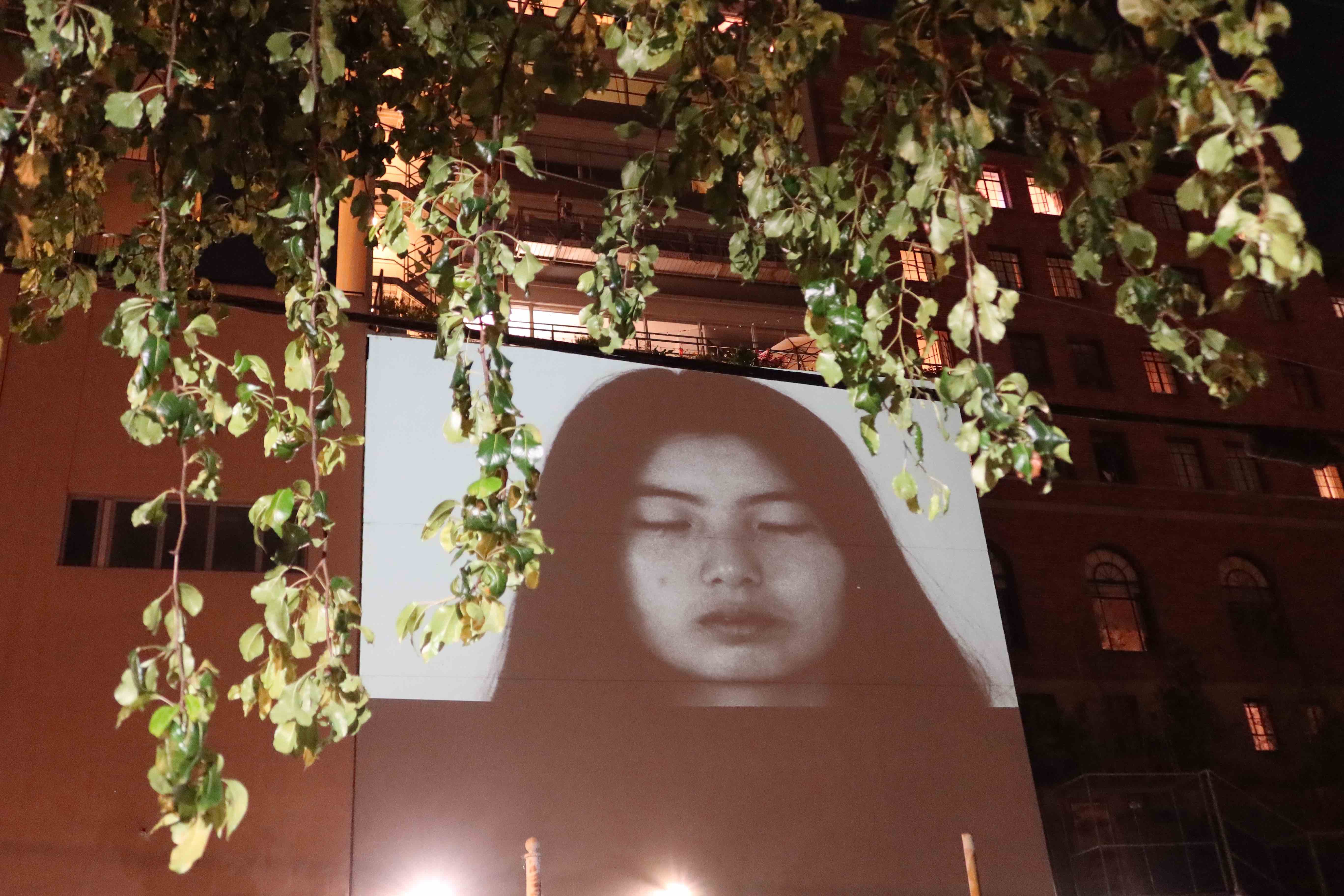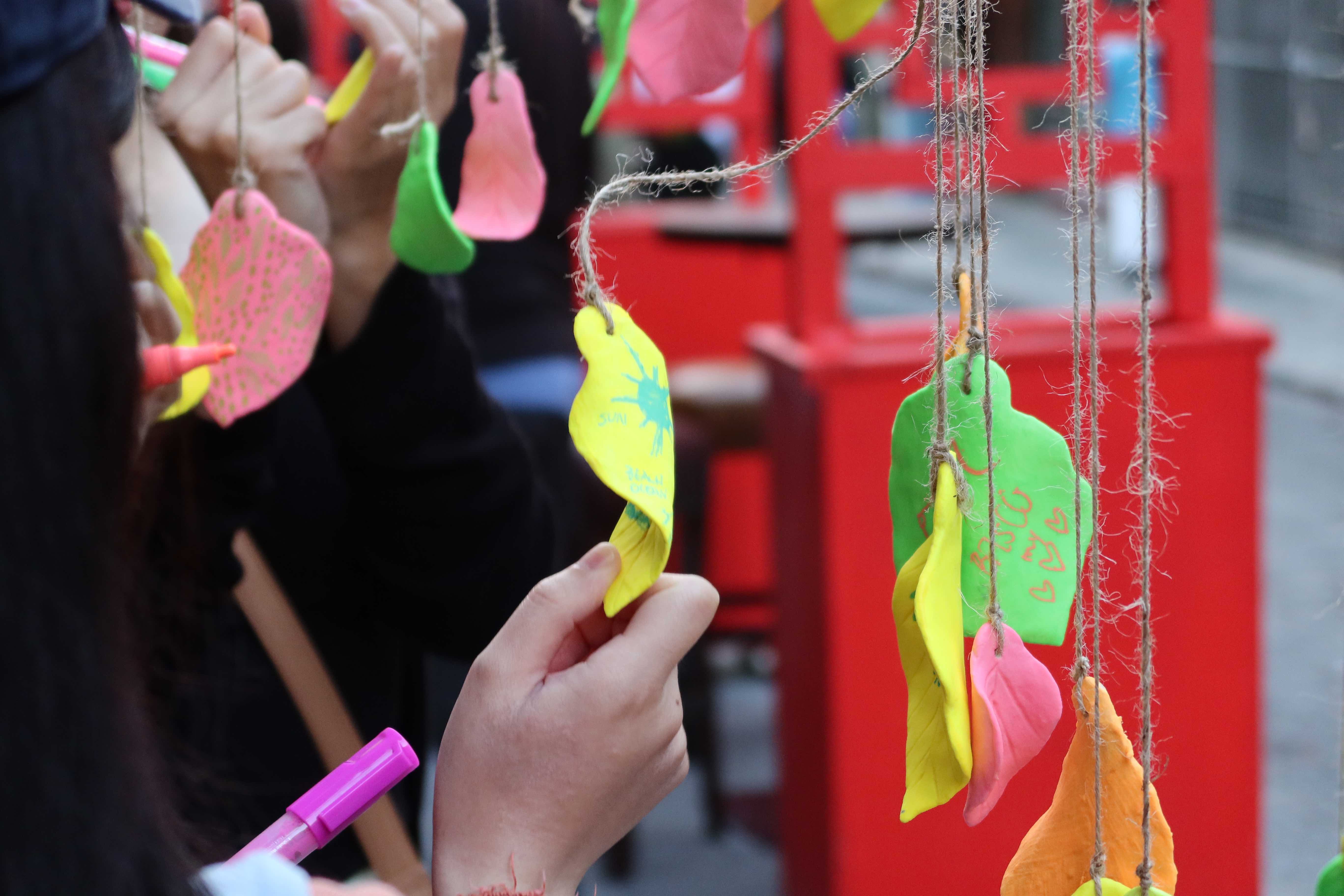One power of a neighborhood is its ability to celebrate and showcase all that it offers. On a recent Saturday night, San Francisco Chinatown transformed itself into a neighborhood-wide contemporary Asian American art festival called Under the Same Sun.
This was the second annual festival of its kind hosted by Edge on the Square and the Chinatown Media & Arts Collaborative (CMAC). It was an honor for CAA to play a role in this festival as a co-founder of CMAC, a collaboration of six nonprofits with deep connections to Chinatown.
We believe that arts and culture have a critical role to play in celebrating and protecting the unique character and nature of Chinatown. And we also believe in the importance of art in social justice movements — to create avenues for chosen families, for joy, and for lasting expressions of resilience and protest.
To continue the conversation, we invited CAA Co-Executive Director Vincent Pan to speak more about our role in CMAC and the connections we see between art and activism:

Q: Can you tell us how Chinese for Affirmative Action (CAA) got involved with the Chinatown Media and Arts Collaborative (CMAC) and Edge on the Square?
Vincent Pan: Roughly five years ago, CAA helped to convene and create CMAC with the Center for Asian American Media, the Chinese Culture Center of San Francisco, the Angel Island Immigration Station Foundation, the Chinese Historical Society of America, and the Chinatown Community Development Center because we saw a problem that could only be addressed if these groups worked together.
The problem was the threat of further cultural displacement and economic collapse on some key commercial corridors in San Francisco Chinatown. We were seeing long-term property vacancies, a growing number of boarded-up storefronts, and the persistent underuse or lack of access to landmark buildings.
Our proposed solution was to leverage Chinatown’s powerful history and legacy community groups to develop a major cultural facility that could help combat displacement while driving the national narrative about who Asian Americans are and the type of inclusive country we want.
To be even more specific, when the Empress of China building was vacant, CAA helped bring the CMAC groups together to explore an affirmative vision for that space — something like a national Chinese American museum — that would be more fitting for Chinatown than tech offices.
Though we didn’t succeed there, the planning led to the vision for Edge on the Square at 800 Grant Avenue, as well as the support of champions such as Assemblymember Phil Ting who helped us secure funding for the building itself.
Q: Why is it important to preserve Chinatown as a neighborhood and demonstrate its resilience?
Pan: San Francisco Chinatown is a living community of residents, families, children, seniors, workers, as well as nonprofits, educational institutions, restaurants, shops, small businesses, and so much more! Chinatown deserves to have the ability and agency to fully thrive and to determine its own future, especially considering how systemic racism and under-investment have hampered its potential in the past.
At the same time, San Francisco Chinatown and its histories, stories, and dreams are crucial for this country’s understanding of race and racial justice. This is so important for Chinese Americans, Asian Americans, and others to appreciate — especially right now when multiracial democracy in the United States is so tenuous, and the need for better U.S. and China relations is so great.
Q: Can you share with our readers a bit more about CMAC and Edge On the Square’s long-term plans?
Pan: Edge on the Square runs the block on Clay Street from 800 Grant Avenue to Walter U. Lum Place on Portsmouth Square Park. Over the next couple of years, Edge will be embarking on a significant renovation campaign. The vision is for it to be a major cultural facility with the capacity to host cutting edge exhibitions and anchor larger festivals and gatherings in Chinatown. Edge has already hosted two contemporary art festivals that exemplify the type of activities it will lead: last year’s Neon Was Never Brighter and last month’s Under the Same Sun.
The longer-term vision of CMAC goes beyond the space at Edge but is rooted in the same exploration. How can we ensure that the physical place of San Francisco Chinatown thrives and protects its unique cultural character? How can we uncover and amplify the historic lessons and current aspirations of Chinatown for all people? I think the work of CMAC is to be a big tent for those who want to address this opportunity.


Q: What do you think is the role of art in the pursuit of social justice?
Pan: I follow the lead of many experts who write and speak about this. But for the work that CAA does, it’s clear that art can help open people’s hearts and minds on social justice issues and bring visibility to our community in ways that policy memos can’t always do.
Effective movements require multiple strategies — from services that meet immediate needs and develop leaders, to organizing, researching, and advocating for policy solutions that will make a difference. We can think of art and culture as a complementary strategy that helps shape the imaginations necessary for other strategies to succeed.
Art can also give coherence and sustenance to activists and community members across movements that share values.
Q: Vincent, how has art and culture shaped your life?
Pan: I think art, broadly defined, has helped me over the years to reflect upon how we all fit into this world, and as a part of that, what values I hold most dear. Whether literature by Ralph Ellison, murals by Hung Liu, or documentaries by Loni Ding, I’ve been most grounded and inspired by artists for whom aesthetic craft and ethical lens are inseparable.



